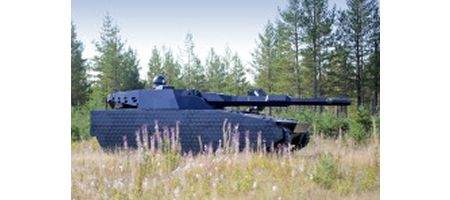BAE Systems has tested an invisibility cloak that allows a vehicle to blend into its surroundings in the infra-red and other frequencies.

Known as Adaptiv, the technology’s based on sheets of hexagonal ‘pixels’ that can change temperature very rapidly. On-board cameras pick up the background scenery and display that infra-red image on the vehicle. It can also mimic another vehicle or display identification tags.
The ‘pixels’ change fast enough for the system to work even when a tank is moving.
Trials showed that one side of a CV90 tank could be made effectively invisible or appear to be something completely different, such as a 4×4 vehicle, when viewed in the infra-red spectrum.
“Earlier attempts at similar cloaking devices have hit problems because of cost, excessive power requirements or because they were insufficiently robust,” says project manager Peder Sjölund.
“Our panels can be made so strong that they provide useful armour protection and consume relatively low levels of electricity, especially when the vehicle is at rest in ‘stealth recce’ mode and generator output is low.”
The pixels can be produced in different sizes, where the range is different. A warship or building, for instance, might not need close-up stealth, so could be fitted with larger panels.
So far, the team’s focused mainly on the infra-red spectrum, as the project’s partly funded by the Swedish Defence Materiel Administration (FMV), and this is its main concern.
However, BAE engineers have extended the system to provide camouflage in other parts of the electromagnetic spectrum at the same time, and say they plan to work further on this over the next few years.






